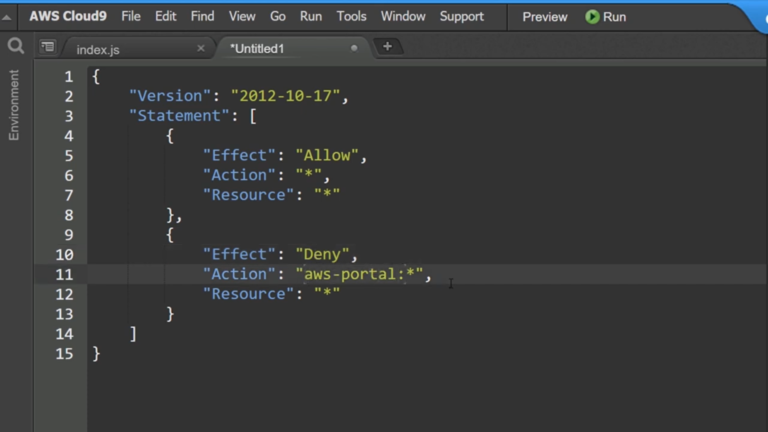Table of Contents
Quick Answer -
Implicit Deny is like a strong wall in network security. It uses special codes called IP addresses and ports to make a rule. This rule says that no data can go through unless someone gives permission. It’s like having a virtual guard that decides if data can pass or not, based on certain rules.
People who manage networks use Implicit Deny to have strict control over what goes in and out. This makes it harder for bad people to attack the network. Setting it up correctly and checking for risks is very important.
In the real world, we can see that Implicit Deny works well. People test it regularly to make sure it keeps things safe. It also gets smarter as technology changes, and it works with other security tools to protect the network.
So, Implicit Deny is like a strong shield for your network, and it’s a big part of keeping things safe on the internet.

Common Mistakes Related to Implicit Deny Firewall
1. Misconfigured Rules
Sometimes, people who manage computer security make a mistake. They don’t clearly say which computer traffic should be allowed through the safety wall. This can cause a problem. The safety wall has a hidden rule that says, “If you don’t tell me what to do, I will say ‘no’.” This means it can block good traffic by mistake. To avoid this, it’s very important to set clear rules that say what is allowed.
2. Rule Loops and Conflicts
Another common mistake is when people make rules that fight with each other. For example, one rule might say, “Let this computer in,” but another rule says, “No, keep this computer out.” This makes the safety wall confused, and strange things can happen. To avoid this, it’s important to carefully check and organize the rules to make sure they don’t fight.
3. Incomplete Rule Sets
Some people forget to make rules for all the different kinds of traffic that should be allowed through the safety wall. This can make the safety wall say ‘no’ when it should say ‘yes.’ When this happens, important services on the network might stop working. To prevent this, always make sure you have rules for all the traffic that needs to get through.
Understanding and managing implicit deny is very important when setting up a safety wall for computers. It helps keep things safe without accidentally stopping good traffic.
Step by Step Guide on how to set up firewall rules
Step 1: Access the Firewall Settings
1. Start by logging into your firewall device or firewall management software. You usually need special access rights to change firewall rules.
Step 2: Know What Your Network Needs
2. Before you make firewall rules, it’s important to understand what your network requires. Decide which types of internet traffic you want to allow and which you want to stop. This means thinking about specific things like apps, services, IP addresses, and communication channels.
Step 3: Make Clear Allow Rules
3. To let specific kinds of traffic through, you need to make clear “allow” rules. Here’s how:
a. Figure out what type of traffic you want to let in, like web browsing on port 80.
b. Create a new rule for your firewall. In this rule, you say where the traffic is coming from, where it’s going, and what it’s allowed to do.
c. Test the rule to make sure it’s doing what you want. Sometimes, you might need to change the rule a bit to make it work right.
Step 4: Deal with Implicit Deny
4. Keep in mind that if you don’t make a rule to allow certain traffic, the firewall will automatically say “no” to it. This is called an “implicit deny” rule. To handle this:
a. Think about whether you want to be very strict and say “no” to everything that isn’t allowed by a rule. This makes things very safe but needs careful rule management.
b. If you want to let some traffic through without making a special rule for it (like basic internet stuff), you can make a rule at the end of your list that says “let everything else through.” Some call it an “any any” rule.
Step 5: Test Your Firewall Rules
5. Test your firewall rules well. Make sure the traffic you want to allow is coming in, and the traffic you want to block is indeed blocked.
Step 6: Keep an Eye on Your Rules
6. Keep watching your network traffic and the records your firewall keeps. Make sure your rules keep working and are up to date. Change rules if your network needs change or if there are new security issues.
Step 7: Write Things Down
7. Don’t forget to write down all your firewall rules and any changes you make. This paperwork is vital for later reference, security checks, and fixing problems.
Remember that different firewalls can work a bit differently, so it’s a good idea to read the manual or get help from the people who make your firewall. And always be careful when you’re changing firewall rules because mistakes can make your network less safe.
Implicit Deny in Firewall Rule ACL:
Firewall ACL rules work on the idea of Implicit Deny. This means that by default, the firewall says “No” to any communication unless there is a specific rule that says “Allow.” Here’s how it works:
- Priority of ACL Rules: The firewall processes rules from the highest priority to the lowest. When a rule matches the conditions of a communication (like source, destination, and port), the firewall follows the action specified in that rule (Allow, Deny, or Discard).
- Allow, Deny, and Discard: These are the actions a firewall can take when a communication matches a rule. If a rule says “Allow,” the communication is permitted. If it says “Deny,” the communication is blocked. “Discard” might mean the communication is silently dropped or ignored.
- Implicit Deny as Default: If a communication arrives at the firewall, and none of the rules match its conditions to allow it through, the firewall follows the Implicit Deny principle. This means the firewall automatically drops or denies the communication because there’s no rule saying it’s allowed.
Implicit Deny Example
- Allow Rule 1: You have a rule that allows incoming email traffic (SMTP) on port 25.
- Action: Allow
- Conditions: Port 25 (SMTP)
- Allow Rule 2: You also have a rule that allows outgoing web browsing (HTTP) traffic on port 80.
- Action: Allow
- Conditions: Port 80 (HTTP)
- User’s Request: A user inside your network attempts to establish an FTP connection to an external server using port 21, which is not covered by any of your explicit rules.
- Firewall’s Response: Since there is no specific rule that allows outgoing traffic on port 21, the firewall follows the principle of Implicit Deny. It automatically denies or blocks the outgoing FTP connection.
- Result: The user’s attempt to establish an FTP connection on port 21 is rejected. The firewall’s default stance is to deny any outgoing communication that doesn’t have a corresponding “Allow” rule.
PDF Documentation
implicit deny firewall fortigate
1. Log Settings
– Your firewall has a feature called “logging” that keeps a record of what it’s doing.
2. Create a Logging Profile
– You make a special record-keeping plan, sort of like setting up a new page in the notebook for the bouncer.
3. Configure the Logging Profile
– In this plan, you decide what the firewall should write down. To see why the firewall said “no” to something, you tell it to write down information about those moments.
4. Apply the Logging Profile to Policies:
– Now, you take this plan and attach it to the specific rules you’ve set for the firewall. You’re telling the bouncer to use this notebook to record “no” moments for certain situations.
5. Verify Deny Logs:
– Once you’ve done all this, the firewall starts keeping a log of when it says “no.” To see these logs, you can look at the notebook (or the firewall’s log file) to understand why certain traffic was denied.
By following these steps, you make sure your firewall keeps a record of why it’s denying certain traffic. It’s like having a record of who the bouncer turned away from the club and why it happened. This is helpful for checking the security of your network and fixing any problems.
Frequently Asked Questions
What exactly does Implicit Deny mean in firewall rules, and how does it work?
Implicit Deny in firewall rules is like a strong default security setting. It means that unless you specifically allow certain types of data to pass through the firewall using rules, the firewall will automatically block or deny all other data. It’s like a virtual guard that says “no” to everything unless you give it permission. This ensures that your network remains secure by default.
What are some common mistakes related to Implicit Deny in firewall rules?
Common mistakes include misconfigured rules, where you forget to clearly specify what traffic is allowed, rule loops and conflicts when rules contradict each other, and incomplete rule sets, where you forget to create rules for all the necessary types of traffic. These mistakes can lead to unwanted traffic being denied or allowed incorrectly.
How can I set up Implicit Deny in my firewall rules, and what should I do to ensure it works correctly?
To set up Implicit Deny, you don’t need to do anything special; it’s the default behavior of most firewalls. However, to ensure it works correctly, you should create clear and specific “allow” rules for the types of traffic you want to permit. Test these rules to make sure they’re doing what you expect. Also, regularly review and update your rules to match your network’s needs and changing security requirements.









